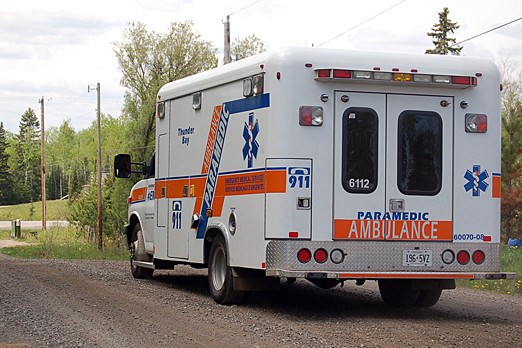Fort William First Nations is considering creating its own emergency first response team as a backup plan in the event the James Street Swing Bridge shuts down.
Ed Landriault, a training co-ordinator and former paramedic, appeared before Fort William First Nation leadership Wednesday evening to pitch the idea of establishing an Emergency First Response team within the community.
The program falls under the Ministry of Health and the supplies are provided by Landriault. The first response team can be made up of anyone in the community and volunteers would be given about 60 hours of training in First Aid and CPR.
Having completed the training, the first response team would be able to handle situations such as car crashes, pregnancies and heart attack until an ambulance arrives.
Coun. Ian Bannon said the community wants to take preventive steps in order to give patients the best care while waiting for an ambulance.
“Response time is always an issue in any emergency situation,” Bannon said. “Our population is growing as well as our residence and there’s the one access road at the bridge. For whatever reason, if the bridge was ever to fail or shut down then there would be extra time in response. We’re looking at potential measures the community can take.”
Bannon said they have started to look for volunteers that would make up the first response team. It would be a short-term solution, but he added he would like to see their own fire station and ambulance base in the community.
Landriault said only an ambulance in Ontario with an EMS service can transport patients.
“Although Thunder Bay is very close, sometimes do to extenuating circumstances if the ambulances are busy or in a different area it can take 20 to 25 minutes to respond,” Landriault said. “Things can be done in that 15 to 20 minutes to improve the outcome of the sick or injured.”
Chief of EMS Norm Gale said he hasn’t been contact by the band council yet, and while a first response team would help the community, Gale warns that it can’t replace the services provided by the EMS.
Compared to the city, it does take ambulances longer to retrieve a patient in the First Nation community. The response time is similar to that of some rural areas.
“The 90th percentile response time to Fort William First Nation is about four minutes longer than for the city of Thunder Bay,” Gale said. “There would be calls that could take 20-to-25 minutes but that happens in the city as well. It just depends on our call volume and what’s going on.
“The calls to Fort William First Nation are longer typically than they are in the city because we don’t have a station but if they call 911 we’re going.“
